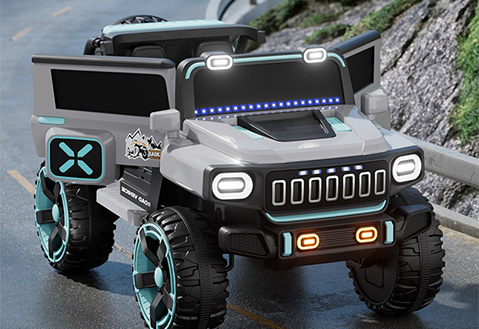Self-Balancing Scooter Wheels for Smooth and Safe Riding Experience
The Evolution and Impact of Self-Balancing Scooter Wheels
In recent years, self-balancing scooters, commonly known as hoverboards, have surged in popularity, revitalizing interest in personal transportation devices. At the core of these innovative creations lies a fascinating technology—the self-balancing scooter wheel. This article delves into the mechanics, benefits, and impact of self-balancing scooter wheels on urban mobility and personal transportation trends.
Understanding Self-Balancing Technology
Self-balancing scooters utilize advanced gyroscopic and accelerometer sensors to maintain equilibrium. The technology works by detecting the rider's body movements, such as leaning forward or backward. When the rider leans in a particular direction, the sensors relay this information to the central processing unit, which adjusts the speed and direction of the wheels accordingly. This intricate system allows users to glide effortlessly with minimal effort, transforming the way we think about personal mobility.
The wheels themselves are typically designed with robust materials to withstand various terrains. They often feature anti-slip treads that provide traction, ensuring user safety while maneuvering on different surfaces. Additionally, the size of the wheels can significantly influence the ride quality; larger wheels tend to offer a smoother experience over bumps and uneven ground, while smaller wheels provide sharp maneuverability.
Advantages of Self-Balancing Scooter Wheels
One of the primary benefits of self-balancing scooter wheels is their user-friendly nature. Unlike traditional scooters or skateboards that require extensive practice to master, self-balancing scooters can be learned in just a few minutes. This accessibility appeals to a wide demographic, from children to adults, making them an attractive option for personal transport.
Moreover, self-balancing scooters contribute to environmentally friendly transportation solutions. They are electric-powered, which means they produce no emissions and reduce reliance on fossil fuels. This aspect aligns with global initiatives toward greener urban environments and sustainable living.
Additionally, these scooters promote a healthy lifestyle. Users engage in mild physical activity while riding, which helps improve balance and coordination. As daily life becomes increasingly sedentary, such forms of recreation can encourage more people to embrace an active lifestyle.
self balancing scooter wheel

The Impact on Urban Mobility
As cities grapple with traffic congestion and air pollution, self-balancing scooters offer a viable alternative to cars for short-to-medium distances. With a maximum speed usually ranging from 6 to 12 mph, they can effectively navigate crowded urban areas, making them a practical choice for commuting. This flexibility allows them to complement existing public transportation systems, providing last-mile solutions that bridge the gap between transit stations and final destinations.
Moreover, the rise of self-balancing scooters has sparked interest in infrastructure adaptations. Cities worldwide are beginning to integrate dedicated lanes and parking options for scooters and other personal mobility devices, promoting a holistic approach to urban transportation planning.
Challenges and Considerations
Despite their many benefits, self-balancing scooters also face challenges. Safety concerns surrounding their use, particularly among inexperienced riders, have prompted calls for regulation and education. The potential for accidents, especially in crowded areas, necessitates guidelines and safety measures to protect users and pedestrians alike.
Furthermore, the durability and reliability of self-balancing wheels vary among different brands and models. Consumers must conduct thorough research to find products that meet safety standards and deliver high performance.
Conclusion
The self-balancing scooter wheel is a remarkable example of modern engineering that has significantly influenced personal transportation. As they become more integrated into urban mobility solutions, their appeal continues to grow. While challenges remain, the potential for these devices to provide a fun, efficient, and eco-friendly mode of transport is undeniable. Whether used for recreation, commuting, or leisurely rides, self-balancing scooters are reshaping the way we navigate our cities, fostering a future where mobility is both convenient and sustainable.
-
Understanding Voltage in Battery for Children's Motorized CarNewsJun.05,2025
-
Safety Features to Look for in an Electric Car for KidsNewsJun.05,2025
-
How to Teach Your Child to Ride a Kids MotorcycleNewsJun.05,2025
-
How to Prevent Falls on a Balanced ScooterNewsJun.05,2025
-
How to Maintain Your 3 Wheeled Scooter for LongevityNewsJun.05,2025
-
Best Motorcycle Scooters for Urban CommutingNewsJun.05,2025
